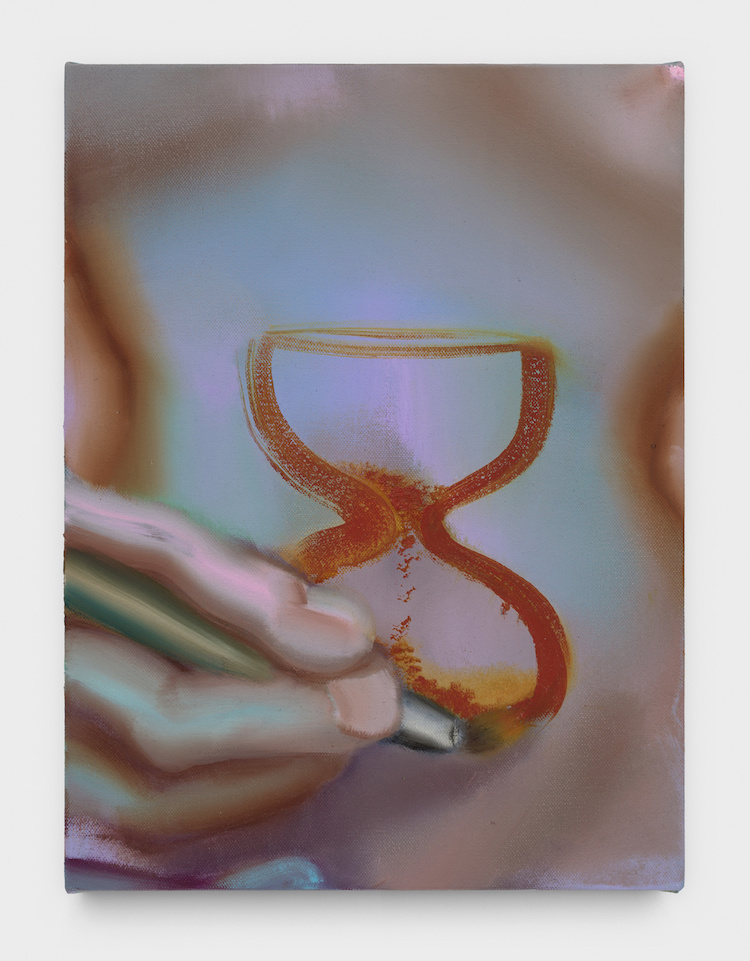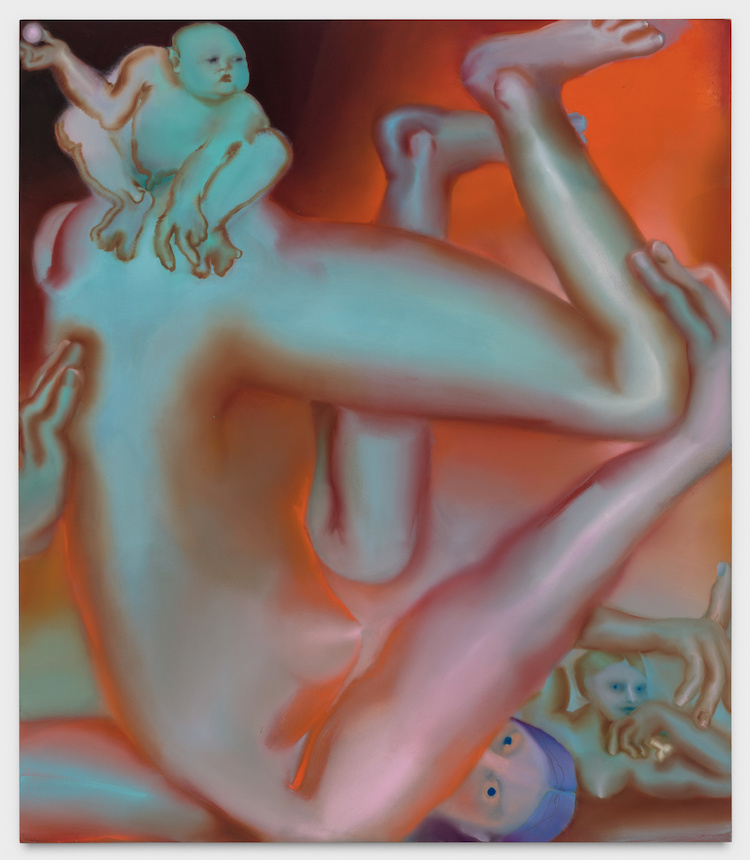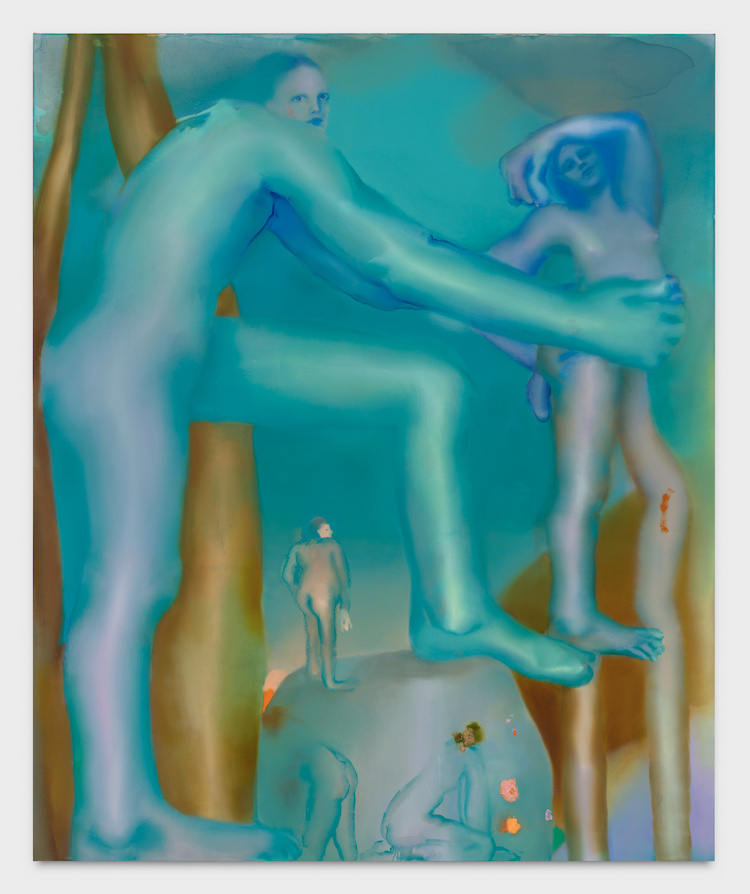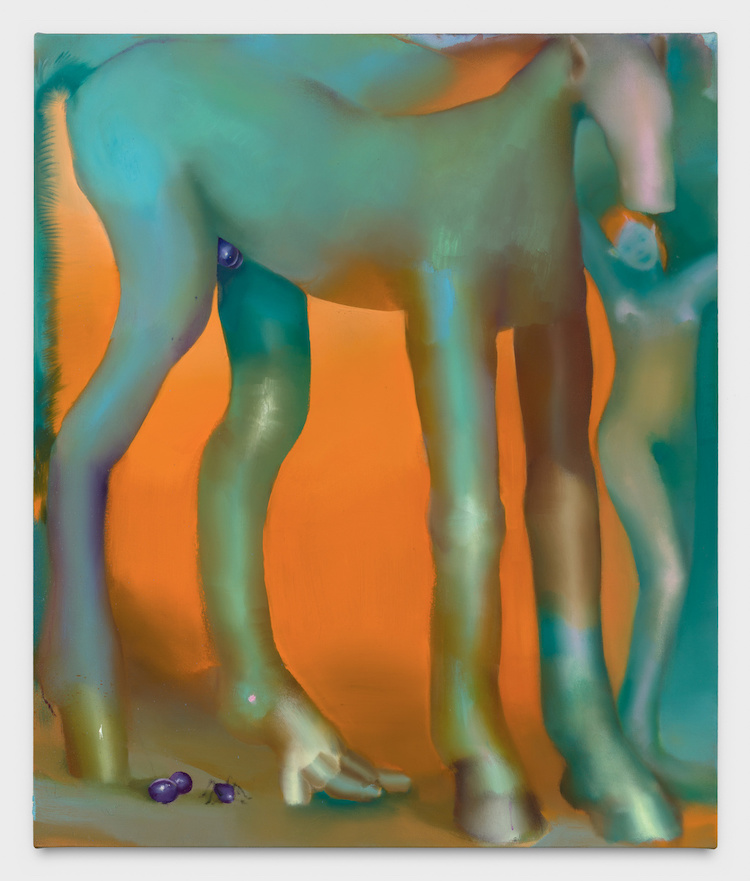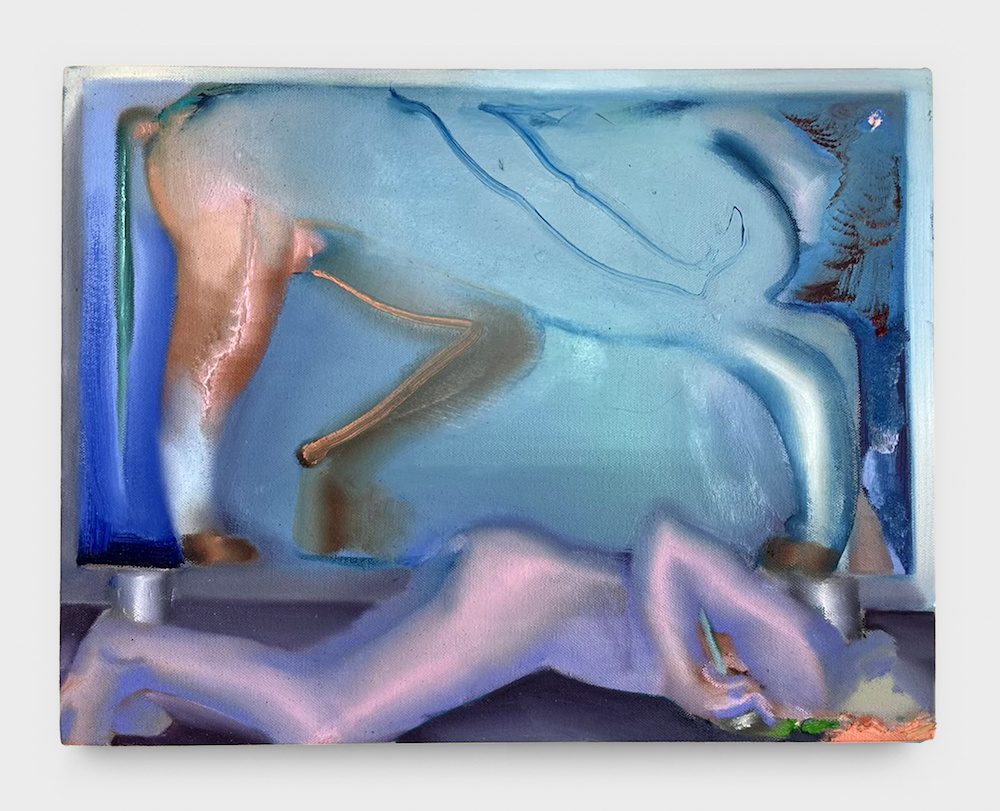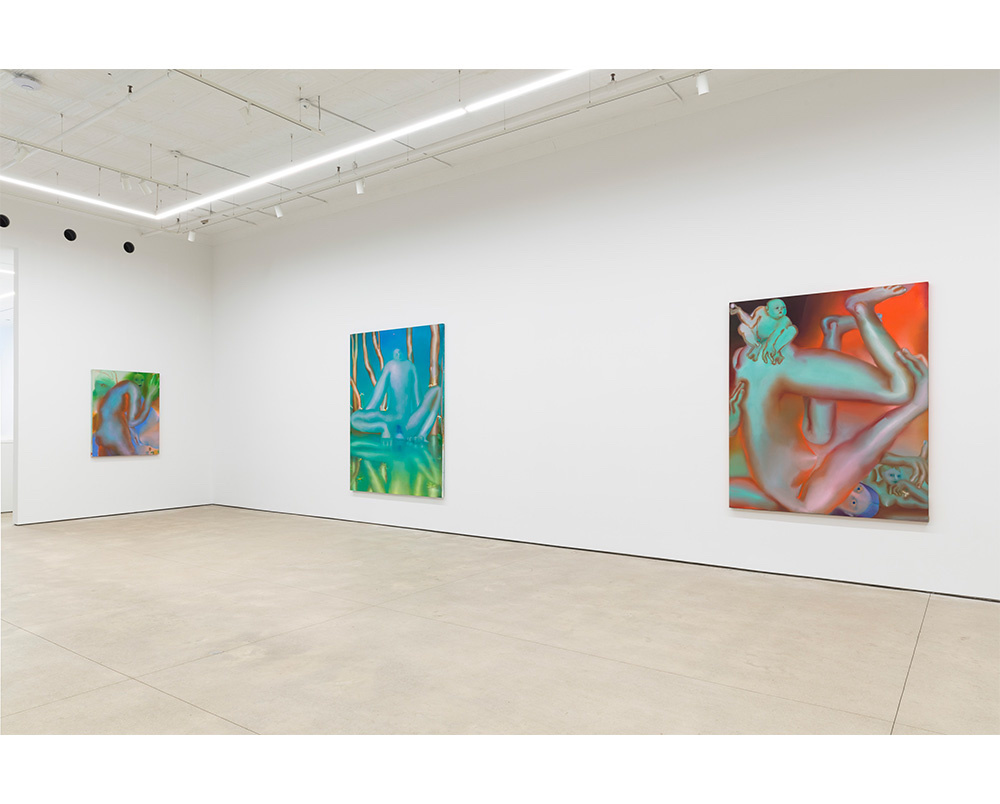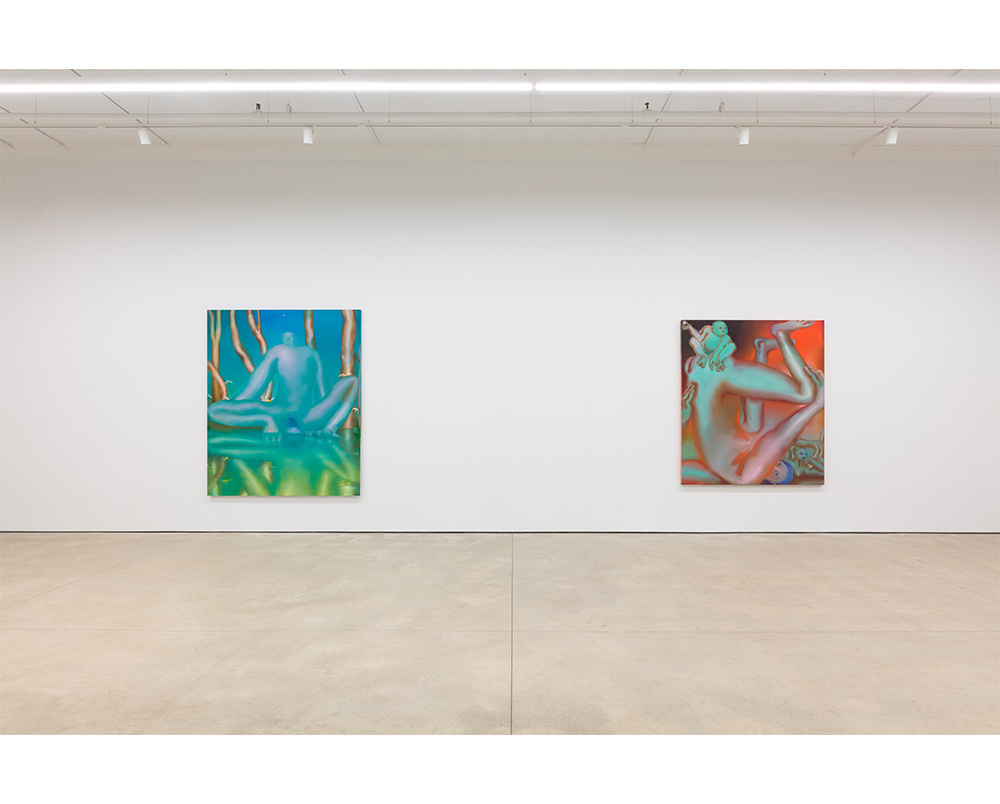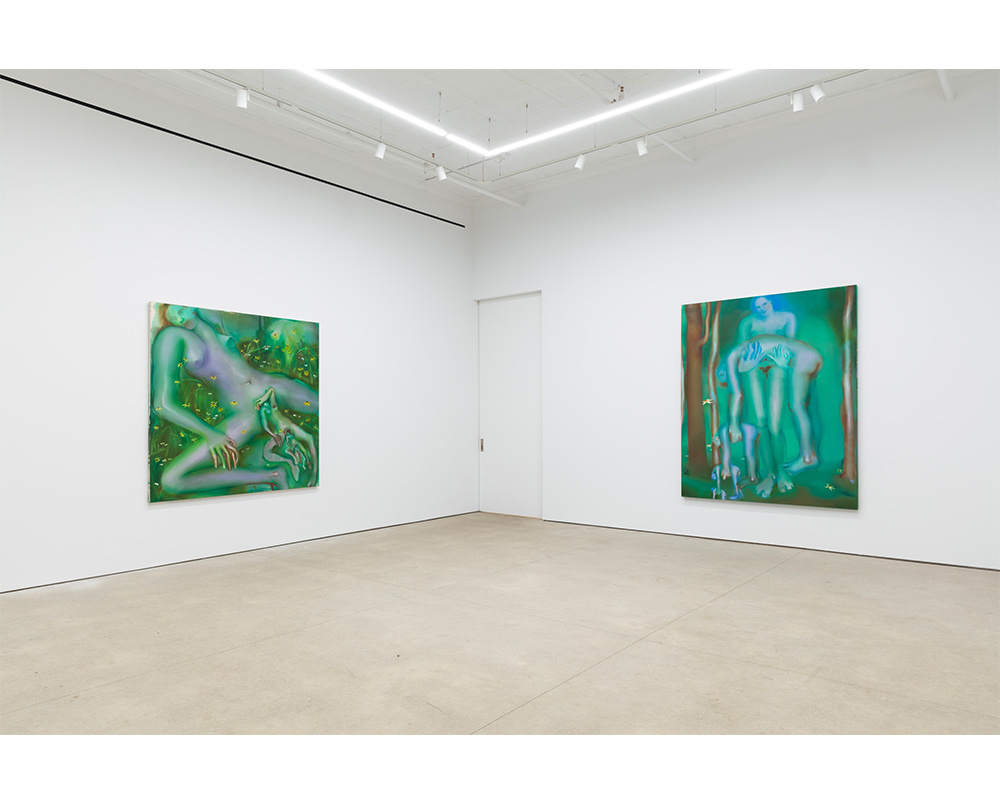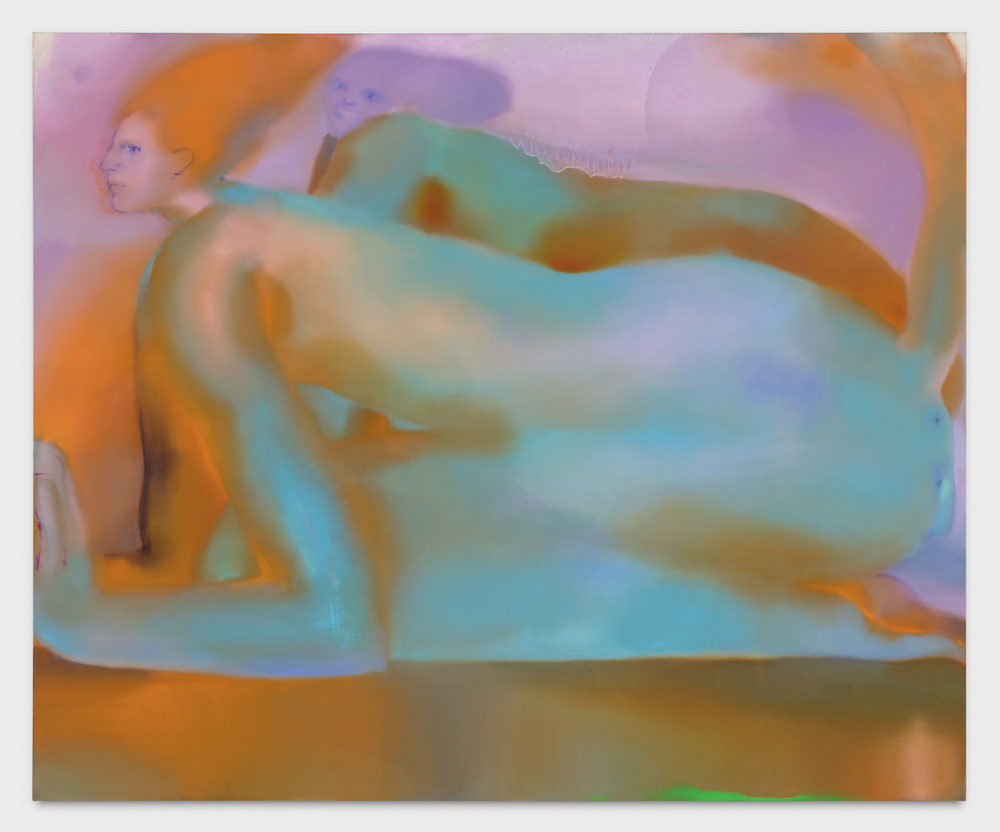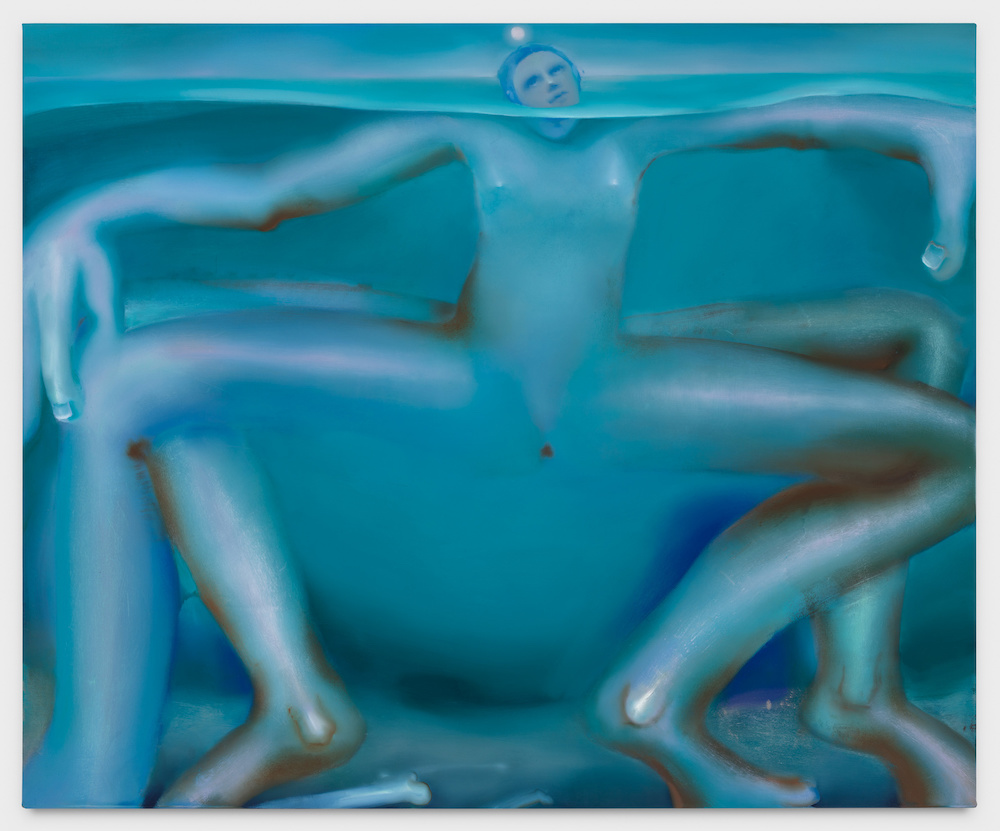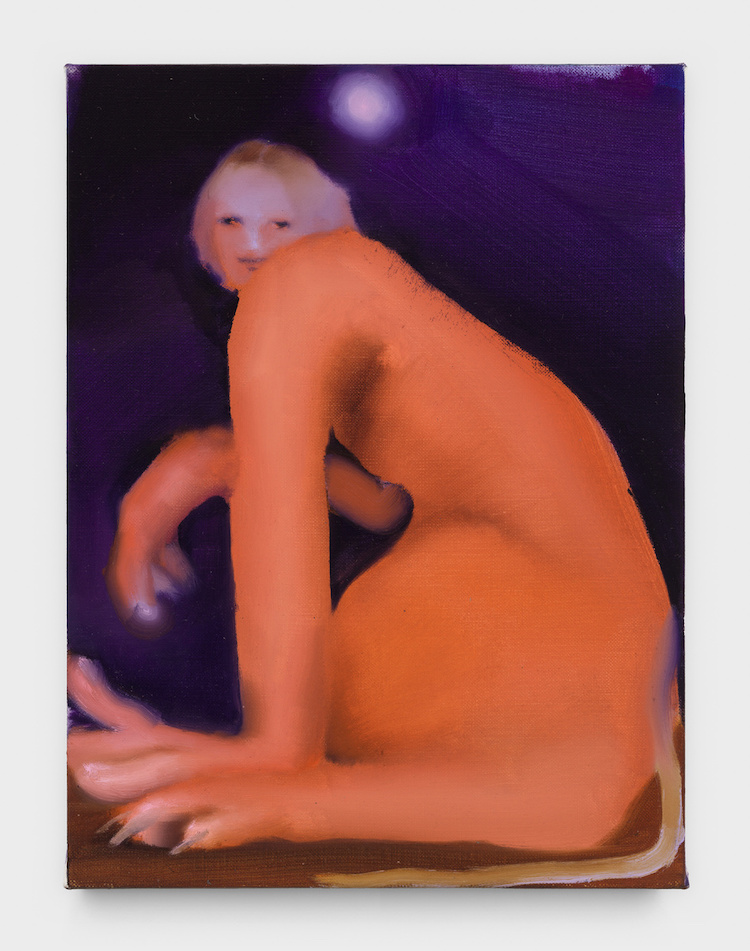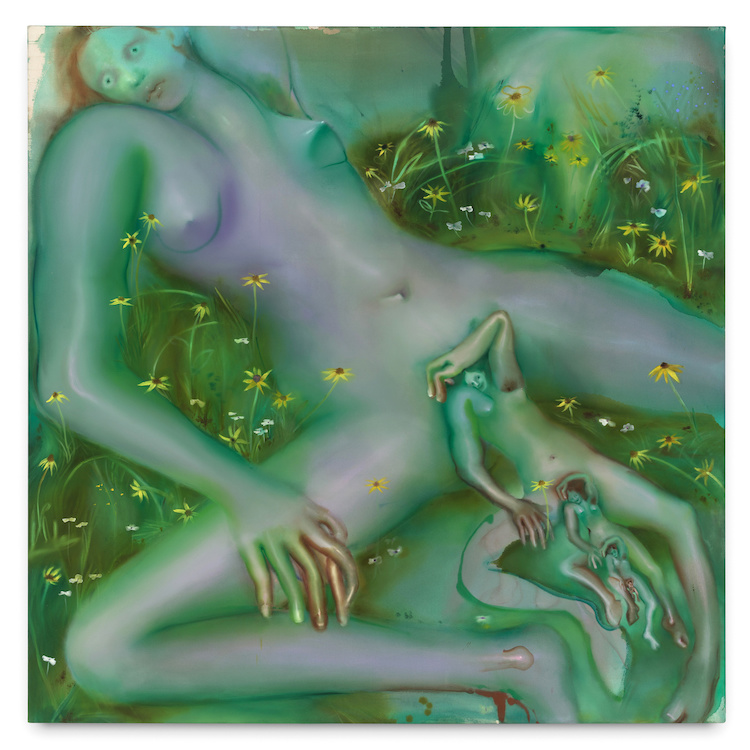P·P·O·W is pleased to present Elizabeth Glaessner’s third exhibition with the gallery, Phantom Tail. Siphoning inspiration from an evolving pool of art historical, mythological, and cultural references, and inspired by symbolist painters such as Edvard Munch, Glaessner conjures a surreal universe of hypnotic landscapes populated by androgynous doppelgangers, sphinxes, fiends, mirages, and more. Throughout the exhibition, Glaessner’s paintings act as portals, shepherding us into a world unmoored by virtue or vice where all manner of myths coexist without predetermined moral resolution.
The exhibition’s title, Phantom Tail, refers to both the lingering sensation of a primordial tail and alludes to possible origin tales now long forgotten. As a child, Glaessner’s protruding tail bone spawned an investigation of this feature as a lost vestige of humankind’s physical animality and our lost connection with the natural world. In paintings such as Galatea on Stilts, 2022, enigmatic limbs and tree trunks tonally and texturally converge, becoming indistinguishable from one another. This convergence reveals society’s cultural castration of our metaphorical ‘tails’ and offers a world where these can be felt again. Glaessner renders alternative psychological, sexual, and emotional worlds where the self is multitudinous, and heaven and hell are made irrelevant.
Glaessner revels in transformation and multiplicity. Reflecting the metamorphosis occurring within these subjects, Glaessner grounds each painting with a bold color field that is variously poured or stained. Shifting between formal articulation and non-representational gesture, Glaessner works by layering oil over poured pigments dispersed with water and various binders to allow for the spontaneity of the paint to lay the foundation for fluid narratives. In Blue Recluse, 2021, Glaessner depicts a multi-limbed, spider-like being treading in a shallow sea. Bobbing just above the surface of the water, the head of this mythological figure echoes the moon on the horizon, while its highly articulated ankles mirror bones littering the sea floor. Sandwiched between these potent symbols, the figure alternately emerges from and dissolves into the surrounding water. Throughout the exhibition, Glaessner returns to liquid as both crucial to the process and symbolic of the emotional fluctuations of the figures.
Through both process and composition, Glaessner seeks to better understand this emotional world by making it visual, the amorphous figures ultimately serving as conduits for ineffable emotion. By mining the unconscious, Glaessner simultaneously triggers our collective primal knowledge buried by centuries of societal boundaries and moral codes.

